The Ultimate Guide to Eliminating Spider Mites on Indoor Plants: A Step-by-Step Approach
📷 Chalet Boutique
Welcome to the ultimate guide on spider mites - the tiny pests that can wreak havoc on your indoor plants. As a plant enthusiast, you understand the frustration of discovering these minuscule yet mighty creatures. Fear not, for in this comprehensive guide, we delve into everything you need to know about preventing and controlling spider mites before they turn your thriving greenery into a battleground.
These persistent pests may be small but mighty and can quickly multiply, causing irreversible damage to your beloved indoor plants. We'll explore the signs of an infestation, effective prevention methods, and eco-friendly remedies to reclaim your garden sanctuary. By the end of this article, you'll be armed with the knowledge and strategies to bid goodbye to spider mites and protect your plants from their destructive frenzy.
Whether you're a seasoned gardener or just starting your green journey, this guide will equip you with the tools to keep your plants thriving and pest-free. So, let's dive in and empower your green thumb against these notorious adversaries.
What are Spider Mites?
Spider mites are a common pest that can infest indoor plants and cause damage to the leaves, and they are extremely destructive pests. These tiny mites are difficult to see; they look like tiny white moving specks on foliage but can also appear tan, red, or black. As they are so small, spider mites are only noticeable once their population is well established. They cause yellowing, speckling, and discolouration of the leaves, and they also spin webs on the undersides of leaves, which can be a tell-tale sign of their presence. The warm and dry conditions of homes during the winter can provide an ideal environment for these pests to thrive and multiply.
Signs of spider mite infestation: What is the first sign of Spider Mites?
The webs they spin are often the first sign of their presence. A closer inspection may reveal the pests crawling on the leaves. Another sign is that plant leaves may look dusty. The plant might look like it isn't getting enough water from a distance because the leaves are drying out.
How do you find Spider Mites on your plants?
Use light: Hold the plant up to the light or use a torch and look under the leaves. It may take a minute, but you can see the tiny mites moving around on the fine webbing. They can appear red or black at times.
Tap the leaves: Spider mites are tiny and difficult to spot with the naked eye. To check for their presence, tap the leaves of your plants over a white sheet of paper. If spider mites are present, they will fall off the leaves and onto the paper, making them easier to see.
Check for movement: Spider mites move quickly, so you may be able to spot them crawling on the leaves or stems of your plants. Use a magnifying glass to look closely at the foliage of your plants.
Use a sticky trap: You can also use sticky traps to monitor for spider mites. These traps can be purchased or made at home using double-sided tape. Place traps near the base of the plant. Check them regularly to see if any mites have been trapped.
Are Spider Mites only on leaves?
It's important to note that spider mites are found on leaves, the stem, and even the soil, so it's important to check everywhere. If you check your plants often and know what spider mite problems look like, you can catch the problem early and take steps to stop it from getting worse.
What does Spider Mite damage look like?
Depending on the level of infestation, spider mite damage can look like a few different things. Some common signs of spider mite damage include:
Yellow or bronzed leaves: Spider mites suck the sap out of leaves, causing them to turn yellow or bronze.
Fine webbing: Spider mites spin fine webbing on the undersides of leaves, which can be an indication of a heavy infestation.
Stippling or speckling on leaves: As spider mites feed on the sap of leaves, they can cause small, discoloured spots or stippling.
Leaf drop: In severe cases, leaves can start to drop off the plant due to spider mite damage.
Stunted growth: Spider mites can stunt the growth of plants and make them more susceptible to other pests and diseases.
It's important to note that spider mite damage can resemble other plant diseases, so it's best to consult with a specialist or check for the presence of spider mites or their webbing before starting any treatment.
How to treat indoor plants affected by spider mites
When treating spider mites on indoor plants, it's essential to take a holistic approach, including using predatory mites, good cultural care, and using chemical pesticides only as a last resort. By following these steps, you can effectively control spider mites and protect your indoor plants from damage.
Natural methods for controlling spider mites
Predatory Mites: One effective way to control spider mites on indoor plants is to use predatory mites such as the Californicus. These beneficial mites feed on spider mites, keeping their populations in check. They can be purchased and released on infested plants.
You can purchase predatory mites from Bugs For Bugs:
Chemical methods for controlling spider mites
Chemical Pesticides: Another method to control spider mites is using chemical pesticides such as Stealth and Kill-A-Mite. But it's essential to use the right tools and carefully follow the instructions for these chemicals, as they can be very dangerous to people and animals if not handled properly. It is also important to note that these chemicals should be used as a last resort, as they can harm beneficial insects and disrupt the natural ecosystem of the plant. Be sure to follow the instructions on the product label. Before putting any chemical solutions on plants, it's always best to talk to an expert or check the label to see if there are any precautions you need to take for that plant.
You must use the correct protective gear when spraying. Chemicals are no joke. Read the label and the Safety Data Sheet for the pesticide in question.
- Chemical resistant gloves (Unlined gloves made of nitrile, neoprene, or butyl rubber are excellent choices.)
- Non-fogging safety eyewear goggles. (Most PPE goggles are designed to fit over eyeglasses, and some have shielded vents that allow for reduced fogging and heat build-up. All PPE goggles are designed to prevent splash and particle drift during application.)
- Full-face respirator & hat
- Wear long sleeves/long pants under washable coveralls
- Rubber boots
Horticultural oil: Horticultural oils such as "eco-oil" or "Searles Ecofend Fruit & Garden Insect & Mite Spray" can suffocate spider mites and their eggs.
Buy Searles Ecofend Fruit & Garden Insect & Mite Spray: Waratah Hobart & Waratah Launceston
Insecticidal dust: Insecticidal dust, such as 'Searles Wettable Sulphur Fungicide', can kill spider mites.
How to prevent spider mites
Spider mites can be controlled by checking the plants often and treating them as soon as you see them. Practising good care for indoor plants is also a good idea to reduce the chances of spider mite infestations. Good care includes:
- Providing plants with the correct amount of light and water.
- Maintaining appropriate humidity levels.
- Keeping the area around the plants clean and free of dust.
Sometimes, you can do everything right and still get Spider Mites – it is just part of having plants.
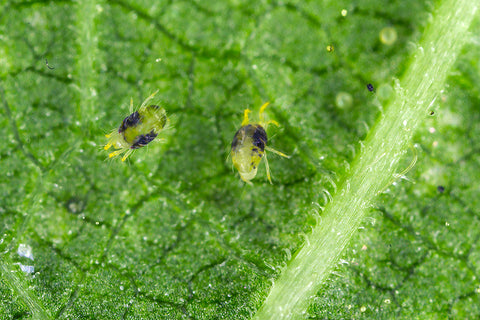
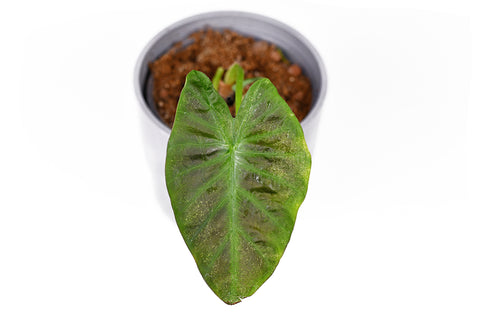
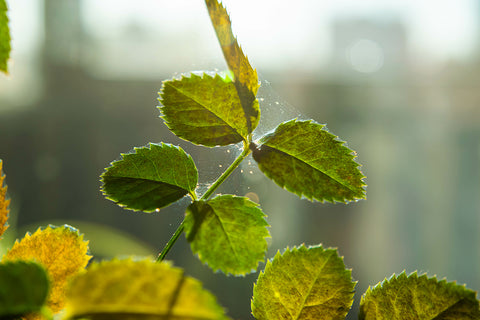
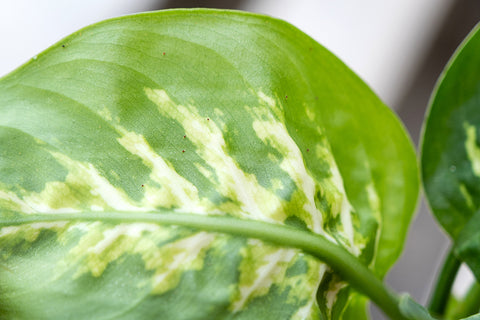
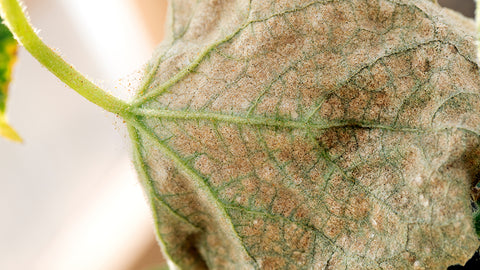
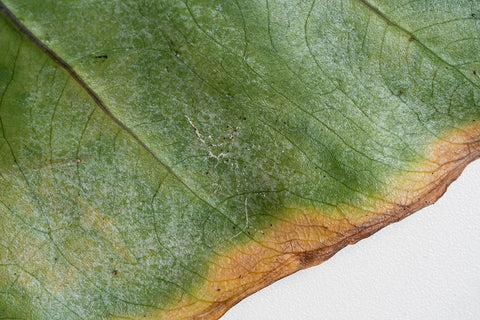
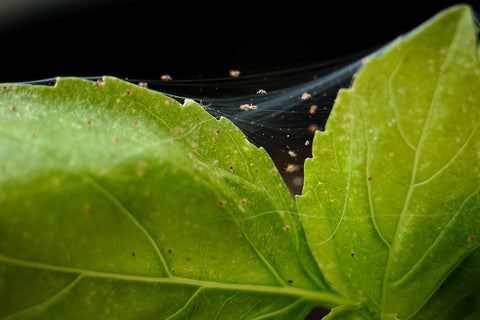
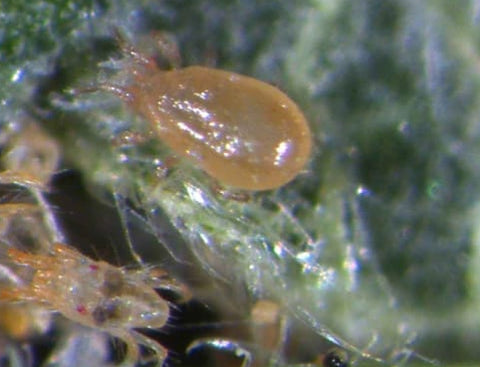
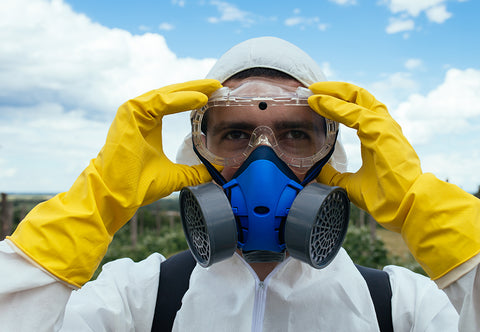


Comments
Kaylene Gemperle said:
I have used predatory mites from Bugs For Bugs a few times now on my indoor plants and it is the only thing that has cleared the infestation with minimal fuss and damage to my plants. It can be a little messy, because of the vermiculite they come in that needs to be sprinkled on the foliage, but if you can put up with that it is preferable to using toxic chemicals.